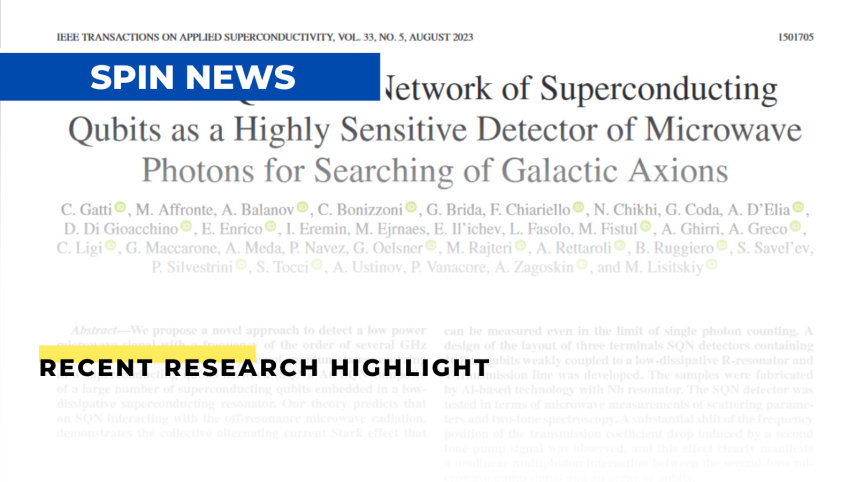The paper "Coherent Quantum Network of Superconducting Qubits as a Highly Sensitive Detector of Microwave Photons for Searching of Galactic Axions", dealing with the demonstration of quantum network of superconducting qubits with highly entangled quantum phases, was recently selected as research highlight within the activities of the National Quantum Science and Technology Institute (NQSTI).
The work was led by Mikhail Lisitskiy (CNR-SPIN) in close collaboration with Berardo Ruggiero (CNR-ISASI), involving research institutions from Italy (CNR, INFN, INRIM, Università of Modena and Reggio Emilia, Università della Campania “L. Vanvitelli”), Germany (Ruhr-University Bochum, Leibniz Institute of Photonic Technology, Karlsruhe Institute of Technology) and United Kingdom (Loughborough University).
This research was developed in the framework of the SUPERGALAX project funded by the European Union’s Horizon 2020 research and innovation programme. In this project, T-type two resonator superconducting qubit networks (SQNs) with 10 c-shunted flux qubits have been fabricated (Fig. 1). The first-tone S21 was measured as a function of frequency in the presence of the second-tone signal applied to port 3. A shift of the position of the resonant transmission dip related to the collective quantum state as a function of the amplitude of the second-tone signal was observed (Fig.2) confirming the novel detection mechanism. It was theoretically predicted and experimentally demonstrated that SQN detector with collective quantum state permits to detect a low power microwave signal with a frequency of 7.748 GHz in the range between -110 dBm and -75 dBm which is lower than the microwave power range of conventional Schottky diode detectors. The detector sensitivity of the investigated SQN device is suitable to count a few photons biasing the resonator between port 1 and port 2 at frequency of 7.743 GHz.



